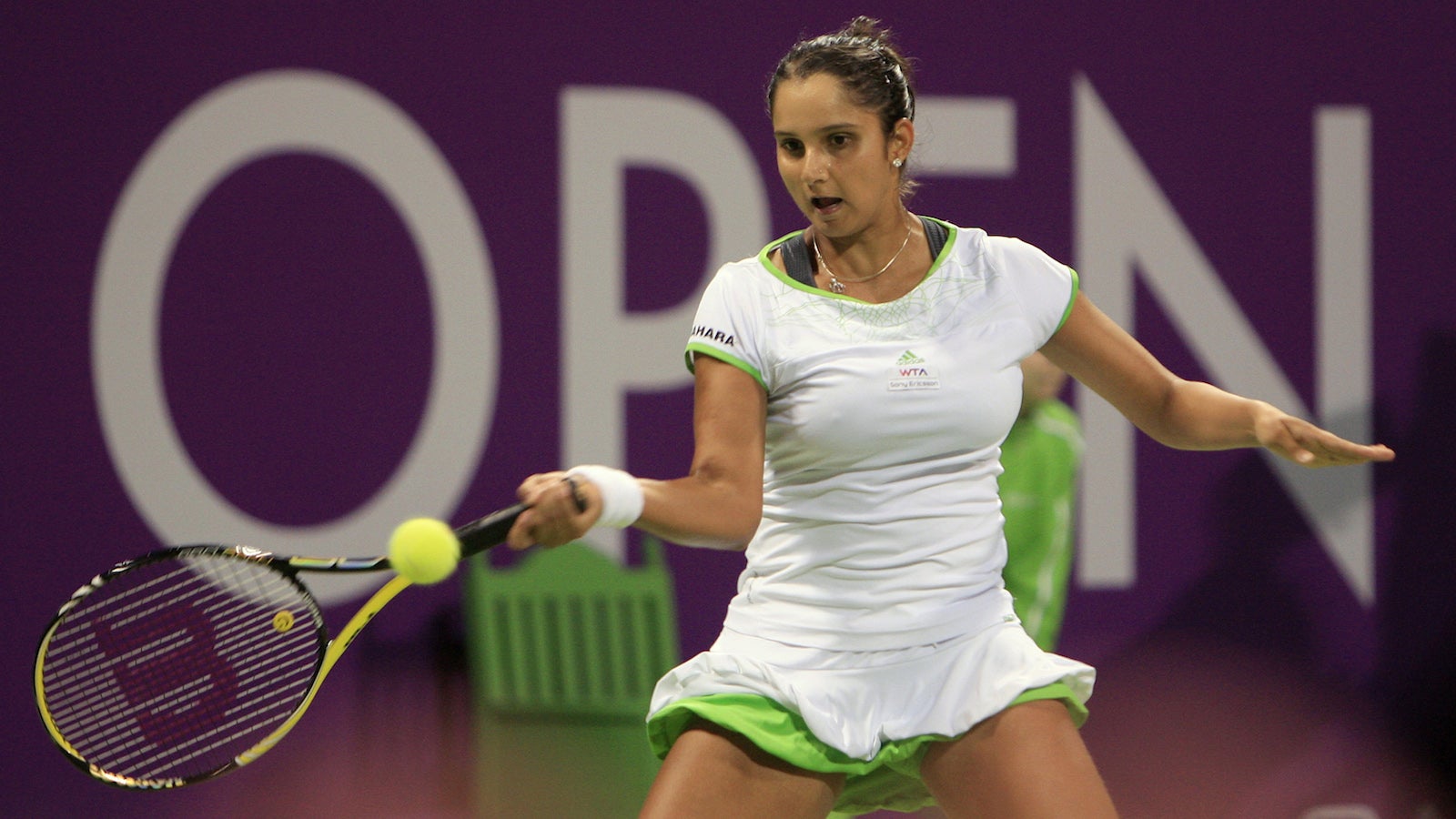After belittling her for years, it is time India appreciates its most famous female tennis star
In this week’s Women’s Tennis Association (WTA) rankings, Sania Mirza is the world’s no. 1 doubles player.


In this week’s Women’s Tennis Association (WTA) rankings, Sania Mirza is the world’s no. 1 doubles player.
India went the whole of the 20th century (and the first decade of the 21st) without a female no. 1 in any professional sport. But this month, the city of Hyderabad alone has produced two such winners, in the form of Mirza and Saina Nehwal (who was crowned badminton world no. 1 on Apr. 2 but has slipped to no. 2 since).
Viswanathan Anand—Indian chess grandmaster—is often cited as India’s most underrated sports champion, but Mirza, too, has a good claim to the title.
Throughout her career, she has been the subject of off-court controversies, each time through no fault of hers. There has been a persistent campaign—on social media and in the comments sections of news sites—to belittle her tennis achievements.
To describe those achievements as being without precedent would be an understatement. Before Mirza, no Indian woman had been ranked in the top 100 in the world in singles, or won a WTA title in singles or doubles.
Mirza had no precedent not only in tennis but in sport in general. She grew up in a world where the only iconic performance by an Indian woman in any sport was PT Usha’s narrow failure to win a medal in the 400m hurdles at the Los Angeles Olympics—and that was in 1984, before Mirza was even born.
Mirza’s detractors argue that she underachieved in singles and has only found success in the “soft option” of doubles. These accusations are rarely if ever thrown at Mahesh Bhupathi or Leander Paes.
These claims reveal a remarkable pettiness and ignorance. Mirza’s achievements in singles alone are more than sufficient for a place in the Indian sporting pantheon. She was ranked No. 27 in the world, has won a WTA title, and has reached the second week at a major (the 2005 US Open). In comparison, if one is appropriate to make, Paes’s highest singles ranking was 73 and Bhupathi’s was 217.
Mirza was one of only four Indians—alongside Vijay Amritraj and the father and son Ramanathan and Ramesh Krishnan—to be genuinely competitive at the top of international singles tennis. More importantly, she was the only Indian, male or female, to be a successful singles player in the modern era of power tennis.
For an Indian sports fan to watch Mirza in her singles heyday from 2005-2007 was an intense experience—with the sheer velocity of her groundstrokes, and her forehand above all, she seemed to singlehandedly drag Indian tennis from the 1970s into the 21st century. Mirza’s second serve and relatively poor mobility were all that stood between her and the very top of women’s singles.
By 2012, a series of injuries had effectively ended her singles career.
Member of an elite club
Those who belittle her success in doubles are ignorant of the difference between the men’s and women’s games, and underestimate the extent to which singles and doubles require different skill sets.
Unlike on the men’s side, the best women’s singles players often play doubles—and by becoming No. 1, Mirza joins a distinguished club whose members include Martina Navratilova, Jana Novotna, Arantxa Sanchez Vicario, Kim Clijsters, Samantha Stosur, Lindsay Davenport, and Mirza’s current partner, Martina Hingis.
While the athletic demands of doubles—in terms of court coverage and stamina—are less than singles, doubles involves a great deal of net-play, which has all but disappeared from the singles game. As a singles star, Mirza looked to hit winners from the baseline and rarely ventured to the net—so, unlike Paes and Bhupathi, she had to reinvent her game to find success in doubles. Anyone who watches the Davis Cup or Fed Cup knows that the best singles players do not automatically succeed in doubles.
Off the court, Mirza has been attacked by Muslim fundamentalists—who believe that no woman ought to be allowed to play tennis at all, given its sartorial demands—and by ultra-nationalists who are especially outraged by her marriage to Pakistani cricketer Shoaib Malik.
She has been serially accused of being unpatriotic—in one instance, she was farcically accused of disrespecting the national flag, and in another, Bharatiya Janata Party member K Laxman bigotedly asserted that as a “daughter-in-law of Pakistan” she was unfit to serve as a brand ambassador for Telangana.
Yet throughout she has represented India in every competition possible—Fed Cup, Hopman Cup, Commonwealth, Asian and Olympic Games—with both dignity and evident patriotism (even though the display of patriotism is an absurd demand to place on a sportsperson). She is as good a medal hope as we have at Rio in 2016.
The controversies surrounding Mirza fit a pattern—she is attacked despite having committed nothing that could be termed an offence or even indiscretion—and the media unfortunately gives disproportionate coverage to these issues. None of her 26 WTA doubles tournament victories—including the 2014 WTA finals, the biggest event outside the Slams—attracted anywhere near as much media attention as her marriage to Shoaib Malik or K Laxman’s remarks.
The fact that no Indian tennis player born after Sania Mirza, male or female, has had anything like her level of success underlines the worth of her achievements.
She had immense natural talent, but growing up without any evidence that an Indian woman could be an international tennis star, her stated objective of becoming world no.1 seemed not so much ambitious as ludicrous.
Now she has achieved that goal. But, just as importantly, through a decade of sustained excellence, she has served as a role model, of the kind she didn’t have herself, to aspiring sportspeople.
This post first appeared on Scroll.in. We welcome your comments at ideas.india@qz.com.